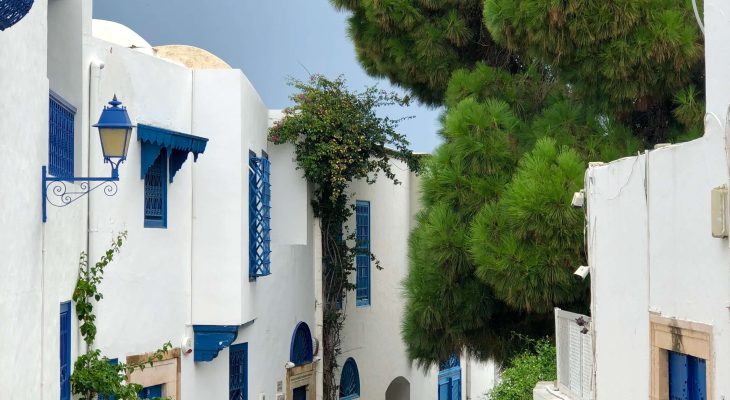Located in North Africa, Tunisia is hemmed in by the Mediterranean coast to the north and shares the same border with Algeria to the west, and Libya to the southeast.
A popular holiday destination in North Africa, Tunisia presents an abundance of tourist sites and scenes. Resort towns like Hammamet located along the Mediterranean coast also provide an abundance of sun and sea.
There are also dramatic desert landscapes, stunning Berber villages, and abandoned Star Wars sets along the southern Sahara.
Capital City:
Tunis is the capital city of Tunisia and is located in the far north of the country.
Population:
According to a CIA World Factbook estimate for July 2017, Tunisia’s population stood at 11.4 million people.
Language:
The official language of Tunisia is Arabic, with French as the language of commerce and industry, spoken by around two-thirds of the population.
Berber remains the principal local language of the south.
Religion:
Islam is the official and predominant religion in Tunisia, with more than 99% of the population identifying as Sunni Muslims. The remaining 1% is made up of Jews, Christians, and Shia Muslims.
Currency:
Tunisia uses the Tunisian Dinar.
Climate:
Like most countries in North Africa, Tunisia has a desert climate, with the weather generally hot and dry for most of the year. Temperatures, however, are much milder around the November to January winter period, while the summers can often see sweltering heat and scorching sunny conditions.
When to Go:
You can visit Tunisia all year round and enjoy the weather, but if you are heading to the north, the best weather is between May and October. In the Sahara, summers are usually marked by the dry scorching sun and those with a low tolerance to extreme heat could travel during the winter months of November to February.
Arriving Tunisia:
For most overseas visitors to Tunisia, the main point of entry is via the Tunis-Carthage International Airport (TUN), located in the capital, Tunis. The airport is served by different airlines, including Tunisair, Air France, Lufthansa, EgyptAir, and Royal Air Maroc.
Medical Requirements:
Apart from making sure all your routine vaccines are up to date, the Centre for Disease Control (CDC), recommends travellers going to Tunisia be vaccinated against hepatitis A and typhoid. Although yellow fever is not an issue in Tunisia, if you are travelling from a yellow fever-prone country, you will be required to show proof of vaccination against it.
Key Attractions
Tunis
Tunis, the Tunisian capital, is a great place to start your travels. With its safe, laid-back vibe and fascinating cultural heritage, the Tunisian capital can be a fun place to be.
Visitors can spend days exploring the winding streets and souks of the medina, or spend time admiring Roman ruins at nearby Carthage. They can explore excellent restaurants at the French Ville Nouvelle quarter, while some of the country’s most famous mosaics can be found at the Bardo Museum.
Sidi Bou Said
Dazzling in its white-domed houses and blue-painted doors, the cliff-top town of Sidi Bou Said is Grecian in its splendor. Tourists and other visitors visit the town to admire the panoramic Mediterranean views and also explore a collection of art galleries, boutiques, and open-air cafes.
To find out more about the history of the town and its unique architecture, head to the Neo-Moorish home of Baron Rodolphe d’Erlanger.
Grand Erg Oriental
Sprawled over 40,000 square kilometres of pure unadulterated desert, Tunisia’s section of the Grand Erg Oriental is a paradise of sweeping dunes and hidden oases. You can navigate the area using a 4×4 or mount a camel as it was done in biblical times while out, make sure you keep an eye out for rare desert wildlife, especially around waterholes.




